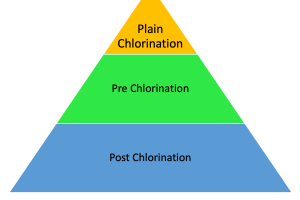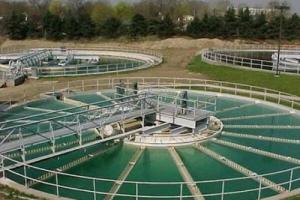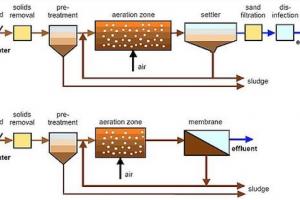What is Environmental Impact Assessment and its Objectives

Definition of EIA
Systematic identification and evaluation of the potential impacts of proposed projects, plans, programs, or legislative action relative to physical-chemical, biological, cultural, and socioeconomic components of the environment is called Environmental Impact Assessment. OR
The process of predicting, identifying, evaluating, and mitigating the biological, social, and other relevant effects of development proposals prior to major decisions being taken and commitments made. It is an important procedure for ensuring that the likely effects of new developmental activities on the environment are fully understood and taken into account before the development is allowed to go ahead.
Environmental impact Assessment is an event or effect, which results from a prior event. It can be described as the change in an environmental parameter, over a specific period and within a defined area, resulting from a particular activity compared with the situation which would have occurred had the activity not been initiated.
Objectives of Environmental Impact Assessment (EIA)
The general objectives of EIA are as follows:
- To ensure that Environmental considerations are addressed properly and incorporated into the decision-making process.
- To avoid, minimize or balance the adverse significant biophysical, social, and other relevant effects of developmental projects.
- To protect the productivity and capacity of natural systems and ecological processes with maintaining their function.
- To promote development that is sustainable and optimize resource use and management opportunities.
The detailed Objectives of EIA are as follows:
-
Identify Potential Impacts: EIA aims to identify and evaluate the potential environmental, social, and economic impacts that may result from a proposed project. This includes both direct and indirect impacts, as well as cumulative effects that can arise from multiple projects or activities.
-
Predict and Assess Impacts: EIA involves the prediction and assessment of the potential impacts by analyzing project details, site-specific conditions, and relevant data. It employs scientific and technical methods to forecast the likely consequences on various environmental components, such as air quality, water resources, ecosystems, biodiversity, and socio-economic factors.
-
Mitigation and Alternatives: EIA promotes the identification and evaluation of alternatives to the proposed project, including the no-action alternative. It also emphasizes the development and implementation of measures to mitigate or minimize adverse impacts and enhance positive effects.
-
Stakeholder Engagement: EIA recognizes the importance of engaging and involving stakeholders throughout the assessment process. This includes the public, local communities, government agencies, non-governmental organizations (NGOs), and experts. Public consultation and the consideration of stakeholder input are crucial to ensure transparency, participation, and accountability in decision-making.
-
Decision Support: EIA provides decision-makers with comprehensive information on the potential impacts and mitigation measures associated with a proposed project. It assists in making informed decisions by weighing the environmental, social, and economic considerations and ensuring that the project aligns with sustainable development principles.
-
Monitoring and Follow-up: EIA emphasizes the importance of monitoring the implementation and performance of the project during and after its completion. Monitoring helps verify the accuracy of predictions made during the assessment and ensures that mitigation measures are effectively implemented. Follow-up actions may be taken to address any unexpected impacts or to enhance the project's environmental performance.
Characteristics of Environmental Impact Assessment
An ideal EIA should have the following general characteristics:
- Apply to all activities that have a significant environmental impact and address all the impacts that are expected to be significant.
- Compare alternatives to a proposed project (including the possibility of not developing the site), management, techniques, and mitigation measures.
- Clear EIS mentions the importance of impacts and their specific characteristics to experts as well as to non-expert in the field.
- Public participation and stringent administrative review procedure
- Be on time to provide information for decision-making and be enforceable.
- Including monitoring and feedback procedures.
Detailed Characteristics of EIA
-
Comprehensive Approach: EIA takes a holistic and systematic approach, considering the full range of potential environmental impacts, both positive and negative. It assesses impacts on various environmental components such as air, water, land, biodiversity, ecosystems, and socio-economic factors.
-
Predictive Analysis: EIA involves the prediction and estimation of potential impacts based on the analysis of project characteristics, site-specific conditions, and relevant data. It utilizes scientific and technical methods to forecast the likely consequences of proposed actions on the environment.
-
Stakeholder Engagement: EIA encourages the active participation and involvement of stakeholders, including local communities, government agencies, non-governmental organizations (NGOs), and experts. It provides opportunities for public consultation, information sharing, and addressing concerns or suggestions related to the proposed project or activity.
-
Cumulative Effects Assessment: EIA considers the cumulative effects of multiple projects or activities in a particular area over time. It assesses how the proposed project may interact with existing and future activities to cause cumulative impacts that are greater than the sum of individual impacts.
-
Alternatives Analysis: EIA evaluates a range of alternatives, including the no-action alternative, to compare the environmental consequences of different options. It aims to identify and promote environmentally sustainable alternatives and mitigation measures that minimize adverse impacts.
-
Transparency and Documentation: EIA is a transparent process that involves clear documentation of the assessment methodology, findings, and recommendations. The documentation allows for scrutiny, review, and verification of the assessment process and outcomes.
-
Mitigation and Monitoring: EIA emphasizes the identification and implementation of mitigation measures to avoid, minimize, or offset potential adverse impacts. It also emphasizes the importance of monitoring the actual environmental performance of the project or activity during and after implementation.
-
Legal and Regulatory Framework: EIA is typically conducted within a legal and regulatory framework established by national or regional authorities. It ensures that the assessment process follows established guidelines and procedures, ensuring consistency and adherence to environmental protection standards.
-
Continuous Improvement: EIA promotes a process of continuous learning and improvement. It incorporates feedback and lessons learned from past assessments to enhance the effectiveness and efficiency of future assessments and decision-making processes.












